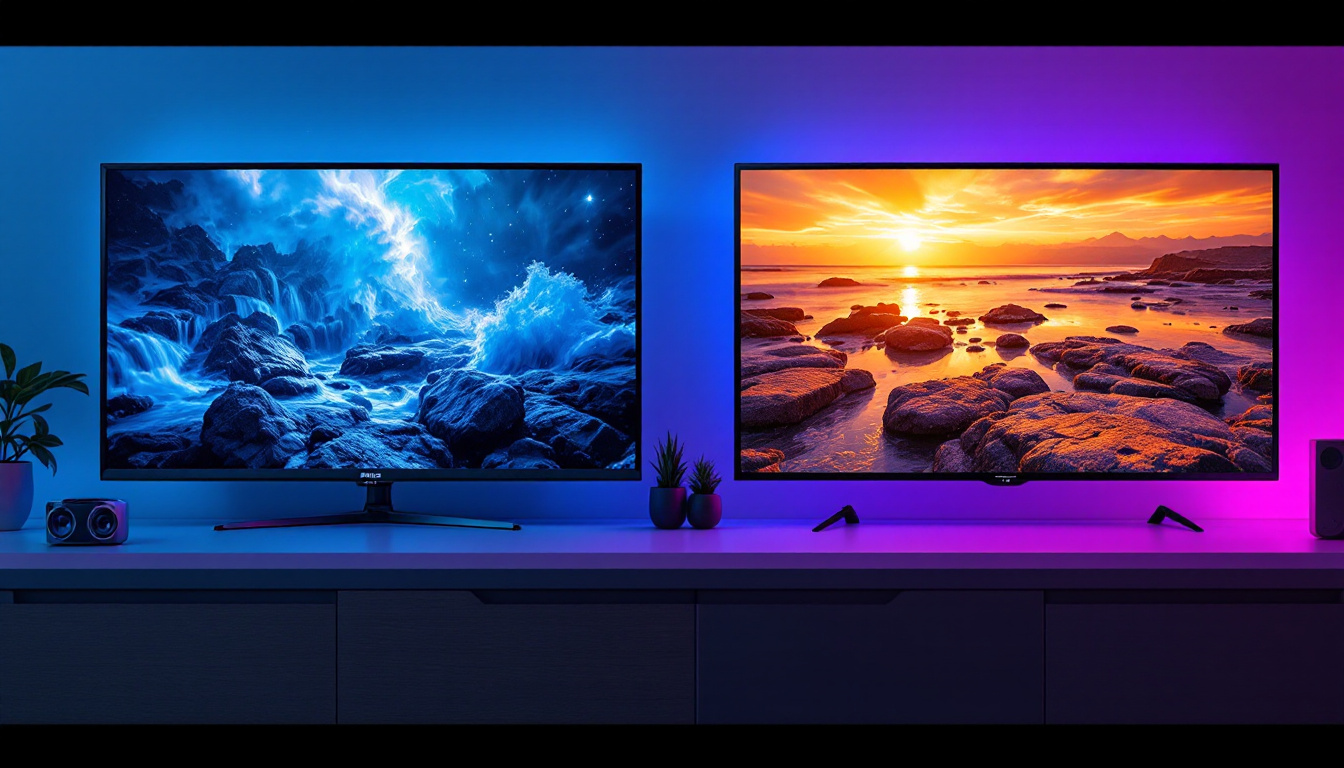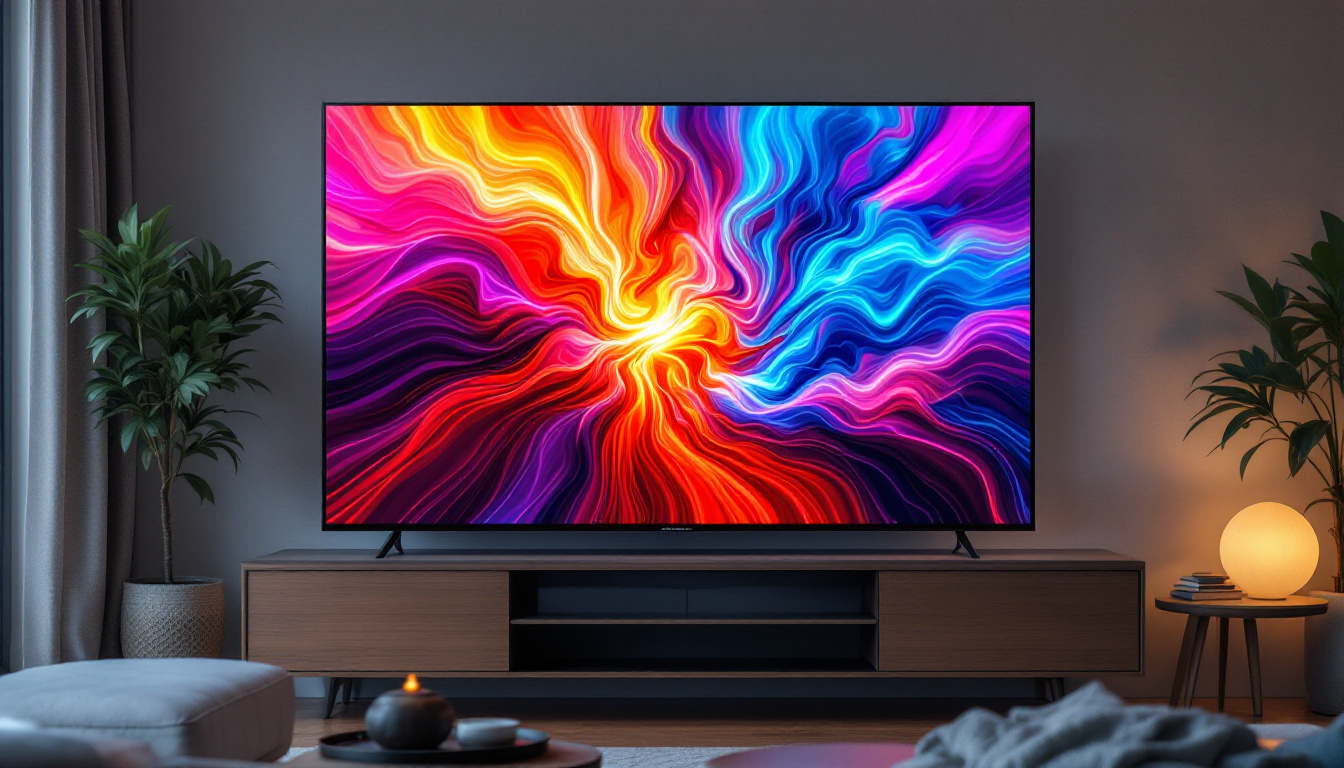The evolution of television technology has been nothing short of remarkable. Among the various types of displays available, LCD (Liquid Crystal Display) and Plasma TVs have been two of the most popular choices for consumers. As technology has advanced, the introduction of LED (Light Emitting Diode) displays has further complicated the decision-making process for potential buyers. This article delves into the differences between LCD and Plasma TVs, while also shedding light on the LED display technology that has become increasingly prevalent.
Understanding LCD Technology
LCD technology has been a staple in the television market for many years. It utilizes liquid crystals sandwiched between two layers of glass. When an electric current is applied, the crystals align to allow varying levels of light to pass through, creating images on the screen. This technology is known for its thin profile and energy efficiency. The innovation of LCD technology has paved the way for advancements in display quality, leading to the development of LED-backlit LCDs, which enhance brightness and color accuracy by using light-emitting diodes to illuminate the liquid crystals.
Benefits of LCD TVs
One of the primary advantages of LCD TVs is their energy efficiency. Compared to older technologies like CRT (Cathode Ray Tube) and Plasma, LCDs consume less power, making them a more environmentally friendly option. Additionally, LCD screens tend to be brighter and perform better in well-lit rooms, making them suitable for various viewing environments. This brightness is particularly beneficial for daytime viewing, where ambient light can wash out the picture quality of other types of displays.
Moreover, LCD TVs are less prone to burn-in, a phenomenon where static images can leave a permanent mark on the screen. This makes them ideal for watching content with static logos or channels, such as news broadcasts or sports events. The longevity of LCD screens is another appealing factor, as they are designed to withstand prolonged use without significant degradation in performance.
Limitations of LCD TVs
Despite their advantages, LCD TVs do have some drawbacks. One significant limitation is their viewing angles. When viewed from the side, the colors and brightness can diminish significantly, which may not be ideal for larger rooms where viewers are seated at various angles. This limitation is often addressed in higher-end models that incorporate advanced technologies like IPS (In-Plane Switching) panels, which provide wider viewing angles and improved color consistency.
Furthermore, while LCD technology has improved over the years, it still struggles with deep blacks and contrast ratios compared to Plasma displays. This can affect the overall picture quality, especially in darker scenes. The introduction of local dimming features in some LCD models has aimed to mitigate this issue by allowing specific areas of the screen to dim independently, thereby enhancing contrast and depth in the image. As a result, consumers are presented with a range of options that cater to different viewing preferences and environments, making it essential to consider these factors when selecting an LCD TV.
Exploring Plasma Technology
Plasma technology, once a leading choice for high-end televisions, operates differently than LCD. It uses small cells filled with gas that, when electrified, emit ultraviolet light. This light then excites phosphors that produce the colors seen on the screen. Plasma TVs are known for their excellent color accuracy and deep blacks, making them a favorite among cinephiles. The technology behind plasma displays allows for rapid pixel response times, which is particularly beneficial for fast-paced action scenes in movies and sports broadcasts. This responsiveness minimizes motion blur, providing a smoother viewing experience that enhances the overall enjoyment of dynamic content.
Advantages of Plasma TVs
One of the standout features of Plasma TVs is their superior color reproduction. They can display a wider color gamut, which results in more vibrant and lifelike images. Additionally, Plasma screens have impressive contrast ratios, allowing for deeper blacks and more detailed shadow areas in movies and shows. This capability is particularly evident in darker scenes, where the subtle nuances of light and shadow can be rendered with remarkable clarity. Furthermore, the ability to produce true blacks enhances the overall depth of the image, making it feel more immersive and engaging for viewers.
Another advantage is their wide viewing angles. Unlike LCDs, Plasma TVs maintain consistent color and brightness from various angles, making them suitable for larger groups watching from different positions in a room. This characteristic is especially advantageous for home theaters or social gatherings, where multiple viewers may be seated at various distances from the screen. The uniformity in picture quality ensures that everyone enjoys the same cinematic experience, regardless of their seating arrangement.
Challenges Faced by Plasma TVs
However, Plasma technology is not without its challenges. One of the most significant issues is the risk of burn-in. This occurs when static images remain on the screen for extended periods, leading to permanent ghosting effects. While manufacturers have implemented features to mitigate this, it remains a concern for many users. Some advanced models now include pixel-shifting technology and screen savers designed to minimize the risk of burn-in, but users are still advised to avoid leaving static images on the screen for too long to preserve the display’s longevity.
Additionally, Plasma TVs are generally heavier and bulkier than their LCD counterparts, which can be a disadvantage for those looking for a sleek and lightweight design. They also consume more power, which could lead to higher electricity bills over time. This increased energy consumption is partly due to the way plasma displays generate light, as each pixel must be individually illuminated. As a result, potential buyers should weigh the benefits of stunning picture quality against the practical considerations of weight and energy efficiency, especially in an era where eco-friendly technology is becoming increasingly important.
The Rise of LED Technology
LED technology is often mentioned in conjunction with LCD, as it refers to the backlighting method used in LCD TVs. LED TVs use LEDs to illuminate the liquid crystals, resulting in brighter images and improved energy efficiency. However, the term “LED TV” can be somewhat misleading, as it still fundamentally relies on LCD technology.
Types of LED Backlighting
There are primarily two types of LED backlighting: edge-lit and full-array. Edge-lit LED TVs have LEDs positioned along the edges of the screen, which can lead to thinner designs but may result in uneven lighting. On the other hand, full-array LED TVs have a grid of LEDs behind the screen, allowing for more uniform brightness and better contrast. Additionally, some full-array models come equipped with local dimming technology, which enhances the viewing experience by dimming specific areas of the screen to create deeper blacks and a more dynamic range of colors.
Benefits of LED TVs
LED TVs offer several advantages over traditional LCD and Plasma displays. They are typically lighter and thinner, making them easier to mount on walls or fit into tight spaces. The energy efficiency of LED technology also means lower electricity costs, which is an appealing factor for many consumers. Furthermore, the longevity of LED lights contributes to reduced maintenance and replacement costs, as they can last significantly longer than their predecessors.
Moreover, LED TVs can achieve impressive brightness levels, making them suitable for viewing in well-lit environments. The improved contrast ratios in full-array LED models can rival those of Plasma TVs, providing a compelling option for home theater enthusiasts. In addition to these advantages, many LED TVs now come with advanced features such as high dynamic range (HDR) support, which enhances color accuracy and detail in both bright and dark scenes. This technology allows viewers to experience content as it was intended, with vibrant colors and lifelike images that draw them deeper into the narrative. As a result, LED TVs have become a staple in modern households, catering to a wide range of viewing preferences and environments.
Comparative Analysis: LCD vs. Plasma vs. LED
When choosing between LCD, Plasma, and LED TVs, several factors come into play. Each technology has its unique strengths and weaknesses, making the decision largely dependent on personal preferences and viewing habits.
Picture Quality
In terms of picture quality, Plasma TVs generally outperform LCDs, especially in dark scenes where deep blacks and vibrant colors are crucial. However, with advancements in LED technology, particularly in full-array models, the gap has narrowed significantly. LED TVs can now offer excellent contrast and brightness, making them a strong contender.
Energy Efficiency
Energy efficiency is another critical factor. LCD and LED TVs are known for their low power consumption, with LED TVs being the most efficient option. Plasma TVs, while offering superior picture quality, tend to consume more energy, which may be a consideration for environmentally conscious consumers.
Longevity and Maintenance
When it comes to longevity, LCD and LED TVs have the upper hand. They are less prone to burn-in and can last for many years with proper care. Plasma TVs, while still durable, may require more maintenance and caution to avoid burn-in issues, particularly for users who watch static content frequently.
Conclusion: Making the Right Choice
Ultimately, the decision between LCD, Plasma, and LED TVs comes down to individual preferences and viewing habits. For those who prioritize picture quality and enjoy watching movies in dark environments, Plasma may still be the best option, provided they are aware of the potential for burn-in.
On the other hand, consumers looking for energy efficiency, lighter designs, and versatile viewing options may find LCD or LED TVs more appealing. As technology continues to evolve, it is essential to stay informed and consider the latest advancements in display technology before making a purchase.
In conclusion, whether one opts for LCD, Plasma, or LED technology, understanding the differences and benefits of each can lead to a more informed decision, ensuring a satisfying viewing experience for years to come.
Discover the Future of Visual Experience with LumenMatrix
As you consider the best display technology to suit your viewing preferences, why not experience the pinnacle of LED innovation with LumenMatrix? Our commitment to excellence ensures that whether you’re seeking an Indoor LED Wall Display for your business, an Outdoor LED Wall Display for advertising, or even specialized solutions like Vehicle LED Displays and LED Sports Displays, LumenMatrix has the cutting-edge technology to transform your visual communication. Embrace the vibrant, energy-efficient, and captivating visual experiences that our LED display modules provide. Check out LumenMatrix LED Display Solutions today and see how we can enhance your brand visibility and audience engagement.































